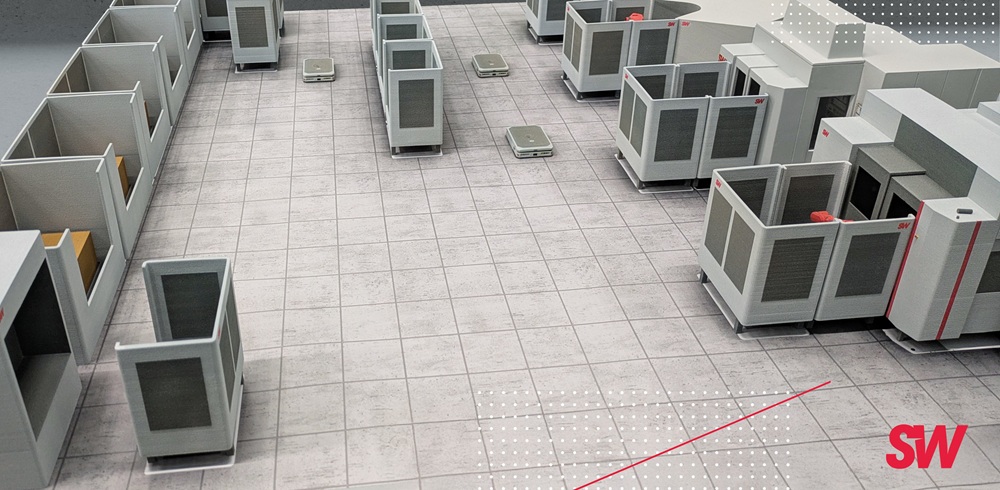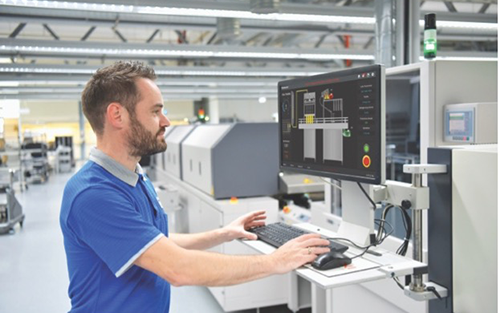Flexxbotics says that Precision Metal Industries – a manufacturer specialising in precision sheet metal products, precision machining, and complex mechanical and electromechanical assemblies – has selected Flexxbotics for robotic machine tending to enable robot-driven manufacturing with autonomous process control in multi-machine processes. The result is greater unattended operation, increased capacity and higher yields.
With Flexxbotics, Precision Metal Industries achieves a cellular-based set up based on a single robot managing multiple factory machines, including a Haas vertical machining centre with tool breakage sensors, a CMM for in-line inspection, along with deburring and cleaning blow-off stations. By increasing per shift throughput productivity and running an additional ‘lights-out’ shift each day, an overall production capacity increase of 125% is achieved with a 17:1 machine-to-man ratio.
Flexxbotics solution seamlessly connects the robot to each piece of equipment, co-ordinating the work so the robot has command and control of the machines in the work cell. Based on inspection results, closed-loop feedback corrections are provided to the CNC machine in real-time for autonomous process control to maintain continuous operation while achieving tight tolerances.
“Our customers demand precision quality and Flexxbotics takes advanced robot automation to the next level with autonomous process control,” says Greg Wilson Jr, owner of Precision Metal Industries. “We especially like Flexxbotics ability to detect tool breakage and automate tool change to keep production running without downtime.”
He adds: “We were impressed with Flexxbotics full turnkey deployment services, which ensured our business goals and requirements drove the solution’s design.”
Precision Metal Industries makes custom missile containers, cabinets, electronics enclosures, chassis, medical equipment housing and many other parts and components for the defence, medical, electronics and avionics industries.
More information www.flexxbotics.com



















